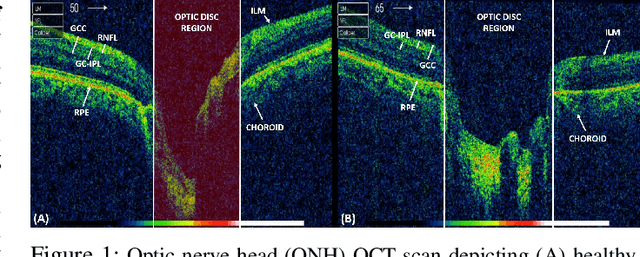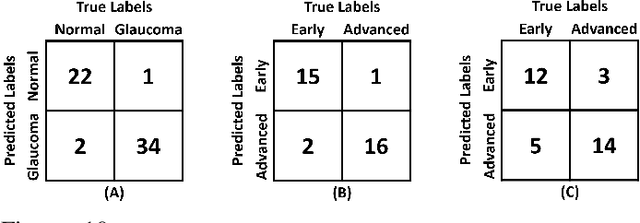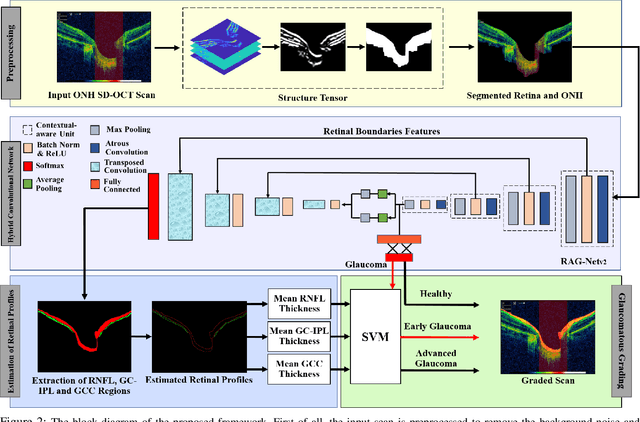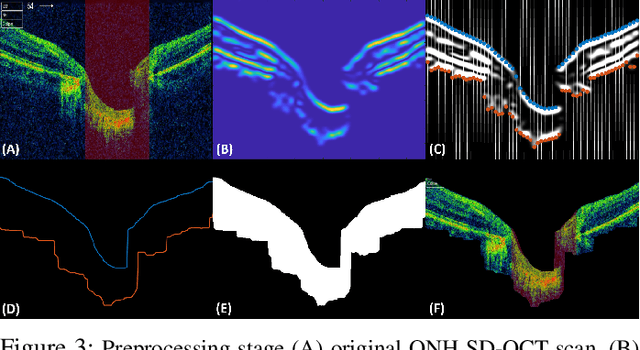Hina Raja
A Comprehensive Review of Artificial Intelligence Applications in Major Retinal Conditions
Nov 22, 2023Abstract:This paper provides a systematic survey of retinal diseases that cause visual impairments or blindness, emphasizing the importance of early detection for effective treatment. It covers both clinical and automated approaches for detecting retinal disease, focusing on studies from the past decade. The survey evaluates various algorithms for identifying structural abnormalities and diagnosing retinal diseases, and it identifies future research directions based on a critical analysis of existing literature. This comprehensive study, which reviews both clinical and automated detection methods using different modalities, appears to be unique in its scope. Additionally, the survey serves as a helpful guide for researchers interested in digital retinopathy.
Using Large Language Models to Automate Category and Trend Analysis of Scientific Articles: An Application in Ophthalmology
Aug 31, 2023Abstract:Purpose: In this paper, we present an automated method for article classification, leveraging the power of Large Language Models (LLM). The primary focus is on the field of ophthalmology, but the model is extendable to other fields. Methods: We have developed a model based on Natural Language Processing (NLP) techniques, including advanced LLMs, to process and analyze the textual content of scientific papers. Specifically, we have employed zero-shot learning (ZSL) LLM models and compared against Bidirectional and Auto-Regressive Transformers (BART) and its variants, and Bidirectional Encoder Representations from Transformers (BERT), and its variant such as distilBERT, SciBERT, PubmedBERT, BioBERT. Results: The classification results demonstrate the effectiveness of LLMs in categorizing large number of ophthalmology papers without human intervention. Results: To evalute the LLMs, we compiled a dataset (RenD) of 1000 ocular disease-related articles, which were expertly annotated by a panel of six specialists into 15 distinct categories. The model achieved mean accuracy of 0.86 and mean F1 of 0.85 based on the RenD dataset. Conclusion: The proposed framework achieves notable improvements in both accuracy and efficiency. Its application in the domain of ophthalmology showcases its potential for knowledge organization and retrieval in other domains too. We performed trend analysis that enables the researchers and clinicians to easily categorize and retrieve relevant papers, saving time and effort in literature review and information gathering as well as identification of emerging scientific trends within different disciplines. Moreover, the extendibility of the model to other scientific fields broadens its impact in facilitating research and trend analysis across diverse disciplines.
Clinically Verified Hybrid Deep Learning System for Retinal Ganglion Cells Aware Grading of Glaucomatous Progression
Oct 08, 2020



Abstract:Objective: Glaucoma is the second leading cause of blindness worldwide. Glaucomatous progression can be easily monitored by analyzing the degeneration of retinal ganglion cells (RGCs). Many researchers have screened glaucoma by measuring cup-to-disc ratios from fundus and optical coherence tomography scans. However, this paper presents a novel strategy that pays attention to the RGC atrophy for screening glaucomatous pathologies and grading their severity. Methods: The proposed framework encompasses a hybrid convolutional network that extracts the retinal nerve fiber layer, ganglion cell with the inner plexiform layer and ganglion cell complex regions, allowing thus a quantitative screening of glaucomatous subjects. Furthermore, the severity of glaucoma in screened cases is objectively graded by analyzing the thickness of these regions. Results: The proposed framework is rigorously tested on publicly available Armed Forces Institute of Ophthalmology (AFIO) dataset, where it achieved the F1 score of 0.9577 for diagnosing glaucoma, a mean dice coefficient score of 0.8697 for extracting the RGC regions and an accuracy of 0.9117 for grading glaucomatous progression. Furthermore, the performance of the proposed framework is clinically verified with the markings of four expert ophthalmologists, achieving a statistically significant Pearson correlation coefficient of 0.9236. Conclusion: An automated assessment of RGC degeneration yields better glaucomatous screening and grading as compared to the state-of-the-art solutions. Significance: An RGC-aware system not only screens glaucoma but can also grade its severity and here we present an end-to-end solution that is thoroughly evaluated on a standardized dataset and is clinically validated for analyzing glaucomatous pathologies.
 Add to Chrome
Add to Chrome Add to Firefox
Add to Firefox Add to Edge
Add to Edge